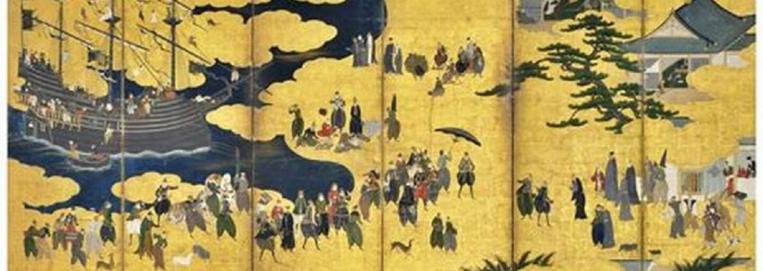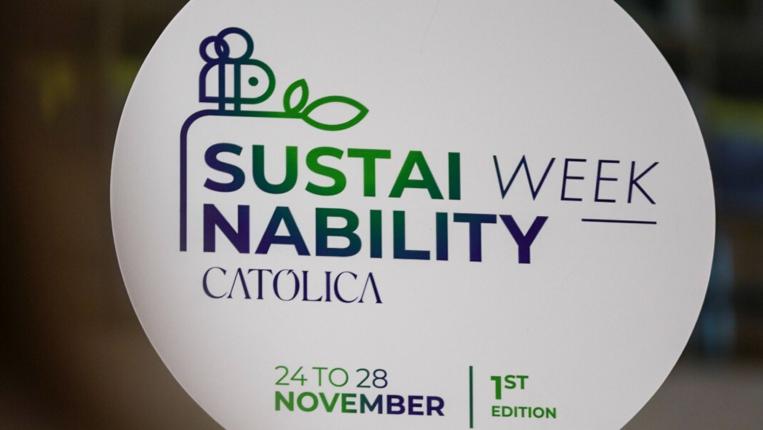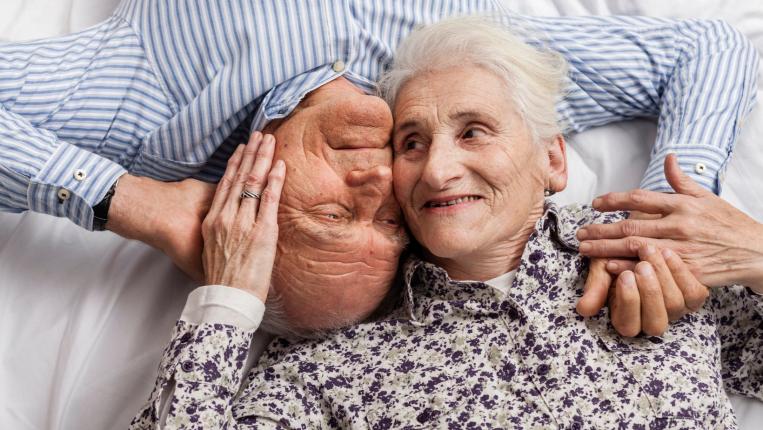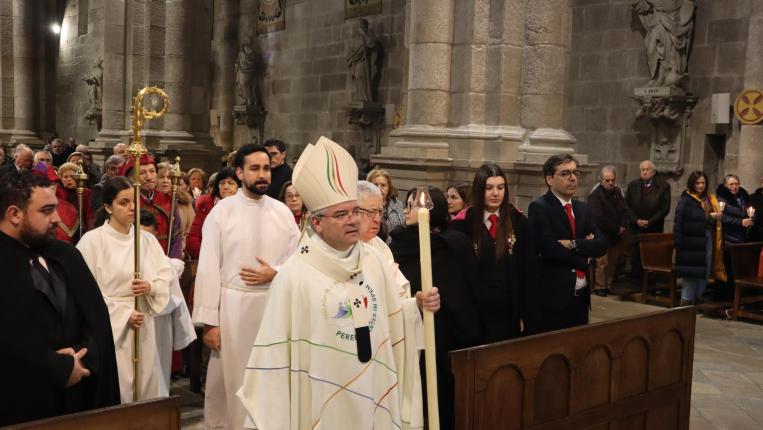Commemorations of the 400th anniversary of the death of this Jesuit, who is part of the group of Martyrs of Japan, are taking place this Sunday in Braga. There will be a Eucharistic celebration presided over by Bishop José Cordeiro and a commemorative session.
Sunday 25th marks the 4th centenary of the martyrdom of Blessed Miguel de Carvalho, a 17th century Jesuit priest and one of the 205 martyrs of Japan, whose canonisation process is underway at the Holy See. Blessed Miguel de Carvalho was born in Braga and was a missionary in the East, having been burnt alive in Omura, Japan, on 25 August 1624.
The commemorations of this date in the city of Braga include two main moments: a Eucharistic celebration in the Primatial See at 11.30am, presided over by Archbishop José Manuel Cordeiro, Primate of Braga, and a commemorative session at 4pm in the Biscainhos Museum on the theme ‘Blessed Miguel de Carvalho in the Biscainhos Museum: 400 years since his Martyrdom and 300 years since the painting on the ceiling of the Great Hall (1624 and 1724)’.
António Júlio Trigueiros, a Jesuit and historian, will give a presentation on ‘Miguel de Carvalho, a martyr from Braga in Tokugawa Japan’, followed by a reading by Mário Vilhena da Cunha of the Letter Handwritten by the Jesuit Miguel de Carvalho, dated 24 August 1624. There will also be a presentation by art historian Giuseppina Raggi on the theme: ‘Manuel Furtado de Mendonça's painting in the noble hall of the Biscainhos Museum and the context of ceiling painting in Portugal during the first half of the 18th century’.
This event also includes the public presentation of the Pectoral Crucifix of the Blessed and a facsimile of the Manuscript Letter, which will be on display until 25 October.
These commemorations are the result of a partnership between the Archdiocese of Braga, the Portuguese Province of the Society of Jesus, the Faculty of Philosophy and Social Sciences of Braga (Catholic University) and the Biscainhos Museum, with a view to marking the four-hundredth anniversary of the martyrdom of the Braga Jesuit and the three-hundredth anniversary of the monumental painting on the ceiling of the main hall of the Biscainhos Palace, dating from 1724.

Miguel Carvalho - from Braga to the Orient *
Miguel Carvalho was born in Braga (São João do Souto) in 1577 to a wealthy noble family. At the age of 20, he asked to be admitted to the Society of Jesus. Five years later, he left for the Orient with a group of missionaries. He finished his theological studies in Goa, where he was ordained a priest and spent some years as a teacher. But his great desire was to be a missionary in Japan.
And so, despite the great difficulties that Christians were experiencing there, he managed to join a group of travellers and merchants, disguised as a soldier, and entered Japan. For a few years, he managed to elude the authorities, preaching the Gospel secretly in the most diverse places, until one day he was discovered and condemned to die by fire. The day before, he wrote the following letter:
‘Time does not give me room for more, because soon I hope to receive from Our Lord this great favour of giving my life for his love, which I desire so much that I cannot explain it in any way. Therefore, with all the affection and love of a true brother, in this I bid farewell to my most beloved brother Simão de Carvalho and all the other brothers and sisters and relatives, and I entrust them to love one another very much and to have great peace and concord with one another, helping one another in everything they can, and in this way the Almighty God will always help them and add to them, whom I pray, through the merits of Christ Jesus Our Redeemer and Lord, to cast his blessing upon them and to add to them and to increase in the spiritual and in the temporal the glory of his divine Majesty, so that we may all see each other in glory, to enjoy ourselves in it and in his presence, loving him for all eternity’.
He was martyred in Omura (Japan) on 25 August 1624 at the age of 47. He was beatified by Pius IX in 1867. He is a candidate for canonisation as part of a group of 205 martyrs from Japan, under the name ‘Blessed Carlos Spínola and Companions Martyrs’.
Martyrdom
‘Nothing else in this life is more appealing to me, more joyful and of greater consolation than to give my life for so good a Lord, thereby giving some satisfaction to the many who have loved me, shedding my blood for the One who shed his own, of infinite value, for my sins’ - this is how Blessed Miguel de Carvalho wrote to his Provincial Superior on 23 August 1624, two days before consummating his martyrdom in the distant lands of the East, which he had been fascinated by following the example of his confrere Francisco Xavier. On the very day of his death, he said goodbye to a fellow missionary: ‘The time I have spent in this prison seems very short to me... nor has this act of giving one's life for Christ ever been represented to me as painful, if not very joyful (...) This desire had come from a long way back, because when he was still a young man at the Society of Jesus’ college in Braga, he had the good fortune to represent Isaac being offered to God by his father Abraham. He experienced the scene in such a way that the desire to be sacrificed to the Lord in Japan soon arose within him.
The stories that were coming in from all over the Empire, but above all from Japan, made martyrdom commonplace in the conversation of the time. The people listened to the passionate accounts and the greatness of the sacrificed. It was only natural that generous souls should yearn for emulation. Miguel de Carvalho never knew the beauty of the first half of the Japanese Christian century. When he entered, the grey years of the second half were already upon us. The Faith was so deeply rooted in those lands that it took an enormous effort to try and eradicate it, without success. This is a unique experience in history: a sophisticated country that receives and welcomes missionisation and, after several decades, when a flourishing Church is thriving, does everything it can to destroy it.
He presented himself to the governor at a time of persecution, claiming to be a priest, missionary and Jesuit. He was condemned to death, but the governor, considering him insane, sent him out of his jurisdiction. Feeling able to speak to Christians to strengthen them in the faith and confess their sins, he set out to visit different cities where there were believing communities. He administered the sacraments, especially reconciliation, celebrated the divine Eucharist, preached and clarified the truths of the creed, exhorting the faithful to set a good example and bear witness to the faith. This work was almost always carried out in the dead of night, after which he returned to his place of residence, the island of Amacusa.
He later met the Father Provincial in Nagasaki, where he stayed. On 21 July 1623, having gone to Omura to attend to the faithful, on his way back to his place of hiding in the early hours of the morning, he was surprised by a spy who took him to the governor. He was immediately taken to jail, where he found other Christians and priests imprisoned like him. For many months, he waited for the hour of martyrdom, in undisturbed hope and continuous prayer, writing to the faithful, superiors and even family members, revealing to them the joy and happiness of his soul as the offering of his life drew near. Finally, on 25 August 1625, together with three priests and a lay brother, his fellow prisoners, he was burned at the stake, so that nothing remained of him but the ashes. In an overflowing joy, manifest in the eyes of the entire audience, his great longing, kept in the depths of his soul since his youth, was fulfilled.
About the cause of canonisation you can consult the website here.
To find out more about the lives of the Martyrs of Japan:
- Martyrs of Japan, João Baptista Machado, Ambrósio Fernandes, Francisco Pacheco, Diogo Carvalho, Miguel Carvalho, Vicente de Albufeira and Domingos Jorge, Eduardo Kol de Carvalho, 192 pages, Braga, 2006.
- Martyrs of Japan, History and Novena (pamphlet), 4 pages, 2004.
- João Baptista Machado, Martyr and Glory of the Azores - Valdemar Mota, 104 pages, Angra do Heroísmo, 1985.
The Cause for the Canonisation of the Martyrs of Japan (whose Vice-Postulator is Father João Caniço) sends any of these three resources free of charge to anyone who requests them, in order to make the story known and increase devotion to these Martyrs of Japan. (address: Estrada da Torre, 26, 1750-296 LISBOA | Telephone: 919 313 946 | E-mail: causa.martires.bj@jesuitas.pt)
* text and information collected by Fr João Caniço, sj







